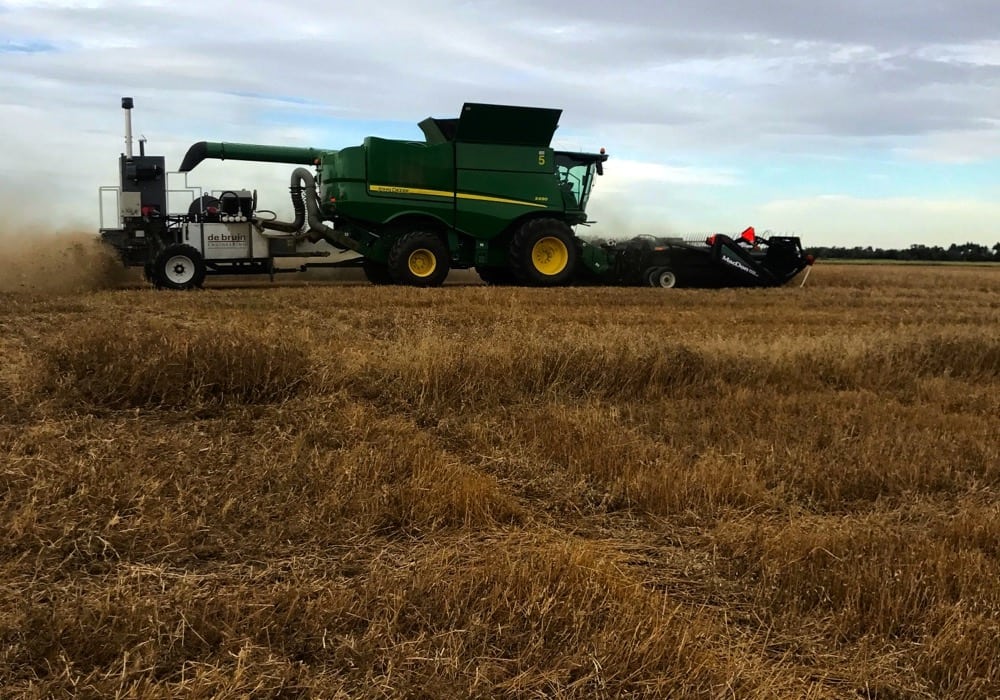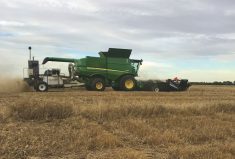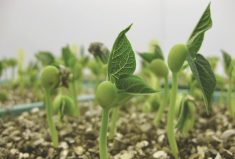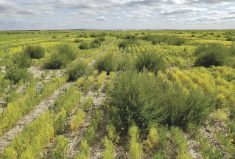Some of the most creative insights and practical solutions for battling herbicide-resistant weed control come from Australia. It was there, in 1996, that the world’s first documented case of glyphosate resistance was found in annual ryegrass, which is Australia’s No. 1 weed problem. As of January of this year, the Australian Glyphosate Sustainability Working Group had documented 17 weed species with resistance to glyphosate, up from 13 only two years ago, accounting for 914 confirmed resistant populations, 678 of which are annual ryegrass.
And that’s just glyphosate resistance. According to the International Survey of Herbicide Resistant Weeds, Australia has 90 unique resistant weeds — that doesn’t mean 90 weed species, it means 90 unique instances of resistance by site of action. For example, a population of annual ryegrass with seven-way resistance in South Australia is unique from populations of the same weed in the same state with one-way resistance. Canada, by the way, has 67 unique resistant weeds, putting us at No. 3 in the world.
Read Also

Agronomists share tips for evaluating new crop products and tech: Pt. 3
With new products, new production practices and new technology converging on the agriculture industry at a frenetic pace in recent…
Facing the loss of herbicide and cultural control tools, growers in Australia began to feel their resistance problem has become so severe, the industry simply had to do something different, which helps explain the Harrington Seed Destructor (HSD). Invented by Ray Harrington, a grain farmer from Western Australia, the HSD pulverizes chaff and weed seeds at harvest as they leave the combine.
That it’s a harvest tool is important. Farmers in Australia invented and are increasingly turning to harvest weed seed control (HWSC) to manage resistance. It’s an approach that focuses on reducing or even eliminating weed seed return to the seed bank, and the HSD is one tool in the HWSC toolbox.
But could the HSD work here in Western Canada, with our different cropping systems and weed profiles? That’s what Dr. Breanne Tidemann is aiming to find out.
A field agronomist and weed scientist with Agriculture and Agri-Food Canada in Lacombe, Alta., Tidemann has just embarked on a three-year study, funded in part by WGRF, to test the HSD in Canadian conditions.
Designing a Canadian experiment
“First we did stationary evaluations of the seed destructor,” says Tidemann. This involved mixing five-gallon pails of chaff and weed seeds (noting the seed size, type and number as well as chaff type and volume), firing up the machine in a shop space, feeding the material through and then assessing the level of seed destruction — which was almost always more than 95 per cent.
“Of course that doesn’t account for seeds that get missed by the combine in actual field conditions,” she says, adding that it did provide a baseline of information to compare with field performance.
In 2017, Tidemann and her team identified 20 producer fields in the Lacombe area for testing the HSD. “We were looking for fields with weed problems,” she says. “The weeds didn’t necessarily have to be herbicide resistant, although we know that with the wild oat populations we’re looking at, for example, chances are there is some resistance there.”
Tidemann says they were looking at a fairly typical cross-section of western Canadian weeds, including wild oats, cleavers, volunteer canola, hemp nettle and chickweed.
The first harvest using the HSD was in 2017. In all, three crops and five cropping systems were involved: wheat (straight cut and swathed), canola (straight cut and swathed) and peas (straight cut). Each field site was split into three to four replicates, and each replicate received two randomized treatments. Treated areas were those where the crop was harvested using the HSD, and untreated areas were those where the crop was harvested normally, without the HSD.
Prior to harvest, researchers did weed counts by species in 20 half-square-metre locations across each site. “Our first results in terms of weed control will come from population counts in the spring,” says Tidemann, adding that she doesn’t necessarily expect to see a huge difference between treated and untreated fields in year one, especially with weeds that have substantial seed banks like wild oat, but she is hoping to see fewer weeds in subsequent years. “We’ll go three harvests in a row on these fields to get a good sense of how effective the seed destructor is at keeping weed seeds out of the seed bank.”
Still, the first year has yielded some information about operating the HSD effectively. “The first thing we learned is that air velocity to move the chaff once it’s off the sieves is key to getting it up and over the inlet and up the slope into the destructor,” she says, adding that to get from the combine into the HSD, the chaff stream has to move straight up, go through a U-bend, then down again and then up a slope to get to the mill. “The second thing is that green or tough material doesn’t flow well and should not go into the seed destructor.” (No surprise, given that pathway just described.)
The third thing is that the tow-behind model Tidemann is using for this study is not well suited to Canada. “The hills we have here create an accordion effect, which can cause some damage to the metal pipes and extra maintenance costs.” There are integrated models of the HSD that would work better here, and Australian studies show that both types provide the same level of weed control.
No easy fix
If the Harrington Seed Destructor seems like the final answer to all your weed resistance prayers, Tidemann is here to tell you it’s not. She says that even if her research shows the HSD to be a good fit for Western Canada, the weeds themselves will ensure that it becomes simply another tool, albeit a powerful one, to add to your integrated pest management (IPM) toolbox.
It’s because weeds are nothing if not survivors. The story Tidemann likes to use to illustrate this point is one about barnyard grass that was hand-weeded from rice fields. The visual differences between the weed and the rice allowed for that type of control, but over time the weed slowly changed its physical appearance to look like rice. “It shows that if you’re constantly using one thing to control weeds, they will find a way to defeat it,” she says.
Expanding the IPM toolbox to include HWSC options (such as the seed destructor) along with herbicides and mechanical controls (such as mowing), simply makes for better overall weed management. “If you can hit those weeds at multiple stages in their growth using different control methods, they can’t adapt as fast,” says Tidemann. “I’m hoping that this research will give us a good idea of how a thing like the seed destructor can work here.”
She should have her final results in 2020. “It may turn out to not be the solution for us, but this project is pushing people to think about different ways to manage herbicide-resistant weeds, to think about non-herbicide tools and think outside the box a bit.”
The Western Grains Research Foundation (WGRF) is a farmer-funded and directed non-profit organization investing in agricultural research that benefits producers in Western Canada. For over 30 years the WGRF board has given producers a voice in agricultural research funding decisions. WGRF manages an endowment fund and the wheat and barley variety development check-off funds, investing over $14 million annually into variety development and field crop research. WGRF brings the research spending power of all farmers in Western Canada together, maximizing the returns they see from crop research.















